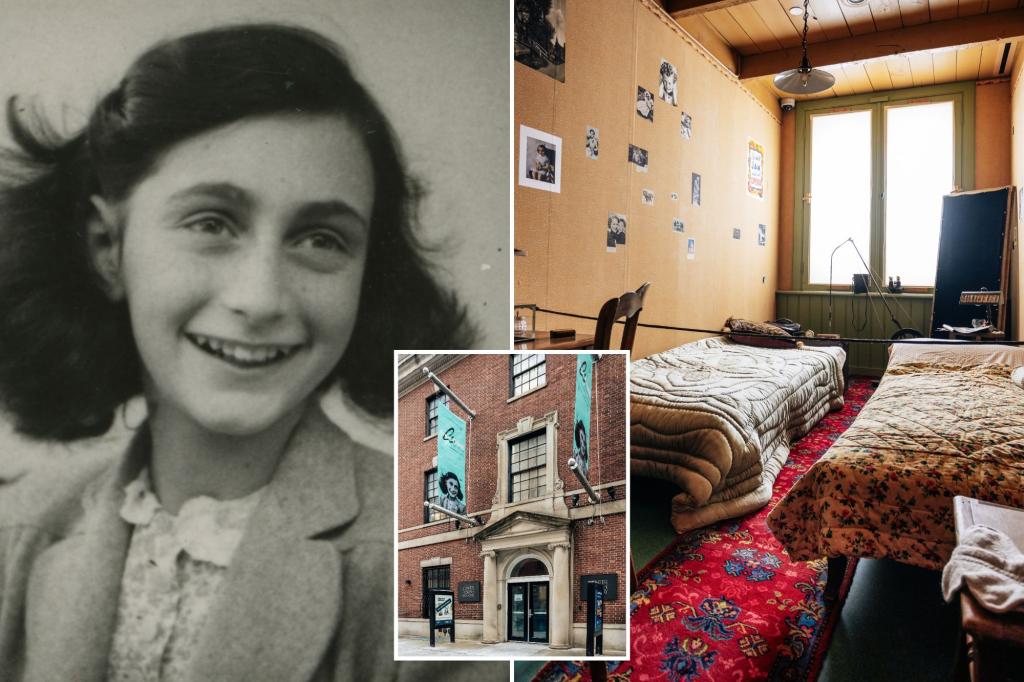“Anne Frank: The Exhibition,” a poignant and deeply affecting display, has journeyed from the Anne Frank House in Amsterdam to the Center for Jewish History in New York City, coinciding with the 80th anniversary of the liberation of Auschwitz. This marks the first time the exhibition, a meticulous recreation of the Amsterdam annex where Anne Frank and seven others hid from Nazi persecution for two years, has ventured beyond its original location. The exhibition serves as a stark reminder of the Holocaust’s horrors and offers a profound insight into the lives of those who endured its atrocities, especially through the lens of the young diarist Anne Frank.
The annex, brought to life within the exhibition, is filled with seemingly ordinary objects that carry an extraordinary weight of history and emotion. These artifacts, once belonging to the Frank family and their fellow inhabitants, offer a tangible connection to their truncated lives and the claustrophobic world they inhabited. From Anne’s postcards adorned with images of movie stars and royalty, reflecting the typical interests of a teenage girl, to Peter van Pels’s unused bicycle and board game, symbolizing a youth suspended in time, each item tells a silent story of hopes, dreams, and lost potential. These personal belongings humanize the individuals behind the historical narrative, offering a glimpse into their daily lives amidst the constant fear and uncertainty.
Anne’s evolving interests are evident in the changing decorations of her shared room. Initially plastered with pictures of glamorous film stars and British royalty, her wall later showcased a reproduction of a Michelangelo statue, hinting at a burgeoning appreciation for art and a deepening maturity. This seemingly insignificant detail underscores the passage of time and Anne’s intellectual growth within the confines of the annex. Meanwhile, Peter van Pels’s room, the only private space in the annex, contained poignant reminders of a normal adolescence tragically interrupted. The bicycle, a symbol of freedom and mobility, remained unused, a stark representation of the confinement and restrictions imposed upon him. The board game, a 16th birthday gift received in hiding, speaks to the attempt to maintain some semblance of normalcy amidst extraordinary circumstances.
The presence of the Frank family’s china, manufactured in Germany in 1925, adds another layer of complexity to the narrative. For Edith Frank, the china likely represented a tangible link to her German heritage and a life irrevocably altered by the rise of Nazism. The Franks’ flight from Germany to the Netherlands in 1933, in a desperate attempt to escape escalating antisemitism, ultimately proved futile. The china, a reminder of a lost homeland, underscores the family’s displacement and Edith’s enduring connection to a country that had turned against them.
Miep Gies’s typewriter, another significant artifact displayed in the exhibition, serves as a powerful symbol of resistance and hope. Gies, Otto Frank’s secretary, and her husband, Jan, played a crucial role in supporting the hidden families. It was Miep who preserved Anne’s diary after the family’s arrest, safeguarding the document that would later become a testament to the Holocaust’s horrors and a window into the indomitable human spirit. Her act of courage ensured that Anne’s voice, silenced by the Nazis, would eventually reach millions across the globe.
The exhibition culminates with a sobering photograph of Anne Frank’s kindergarten class, a stark visualization of the devastating impact of the Holocaust on an entire generation. Of the 32 children pictured, 15 were Jewish. The fate of these children, some murdered, some surviving in hiding or concentration camps, underscores the immense loss and the random cruelty of the genocide. The photograph serves as a powerful reminder of the 1.5 million Jewish children whose lives were tragically cut short simply because of their religious identity. The exhibition, in its entirety, is not merely a historical display but a call to action against bigotry and intolerance, reminding us of the importance of remembering the past to shape a more just and humane future.

